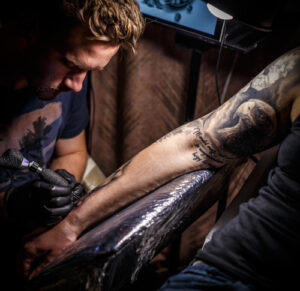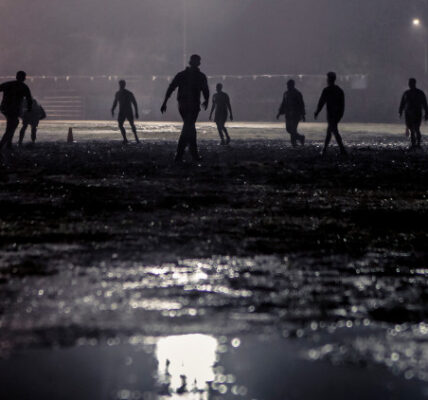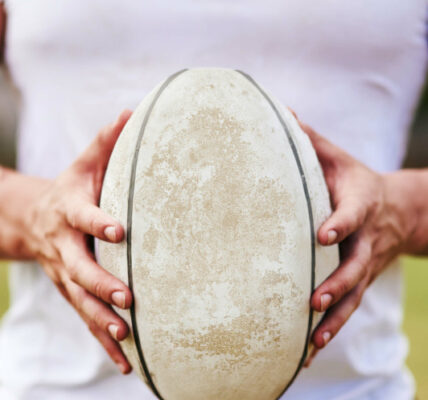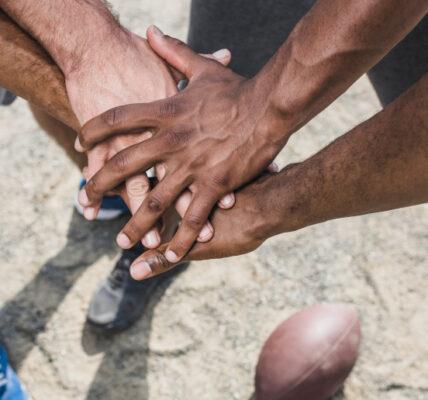On any given Saturday afternoon in KwaZulu-Natal, when the sun dips low and the smell of braai smoke curls through the air, you’ll find a familiar ritual playing out. Jerseys get pulled on, boots laced tight, and for many, there’s one last piece to the kit, a tattoo glimpsed beneath a sleeve, stretching across a calf, or wrapped around a forearm. Sharks logos, Springbok crests, verses in isiZulu, Maori-inspired lines blended with African patterns.
Rugby in KZN isn’t just a sport. It’s a brand of belonging. And for some, that belonging is written in ink. The KZN Rugby Tattoo isn’t an official thing, there are no rules, no club membership. But once you start noticing it, you can’t unsee it. At club games in Umlazi, at youth tournaments in Pietermaritzburg, even at schoolboy matches in Hilton or Westville, those markings are everywhere, silent, permanent declarations of loyalty.
For veteran players, a tattoo can carry years of history. S’bu Mngoma, who spent over a decade playing club rugby in Durban North, wears a battered number 8 on his bicep. “It’s not just my position,” he says, flexing slightly as if the muscle remembers. “It’s my story. From my first senior game to my last, that number’s been mine.” For S’bu, the ink went on after his final match, a cup final loss, but one he still calls “the best day of my rugby life.”
It’s not all crests and numbers. Some players opt for more personal symbolism. Zulu shields, phrases in Afrikaans and isiZulu, stylised renditions of try-scoring silhouettes. In one corner of KwaMashu, there’s even a small tradition of getting tattoos to honour team-mates who’ve passed away, dates, initials, sometimes just a single boot outlined in black ink.
Tattoo artist Themba Mbele, who runs a small studio in Pinetown, says about 30% of his clients are rugby players or fans. “I’ve done everything from Springbok logos to full sleeve designs,” Themba says, flicking through photos on his phone. “Some guys come in just before a big match, like a final, and get something fresh. Others wait until it’s all over, when their boots are hung up, then they sit down for a piece that says ‘I was there.’”
These aren’t studio-perfect designs all the time either. Walk around places like Empangeni or Margate, and you’ll find backyard artists with makeshift machines etching rugby-themed ink. Some of it’s rough, a little shaky around the edges. But in many ways, that’s part of the story, raw, real, exactly like the game itself.
And it isn’t only the men. With women’s rugby growing rapidly in KZN, female players have started embracing the ink tradition too. Nokwanda “Nox” Dlamini, who captains a local women’s sevens team in Durban, has a small lightning bolt tattooed just below her ear. “It’s for speed,” she laughs. “And for strength. On the field, it reminds me, don’t slow down.”
The history of rugby tattoos isn’t something you’ll find in museum archives, but talk to enough players and supporters and a quiet legacy emerges. Back in the 1980s and 90s, as rugby was transitioning from a strictly white, largely elite sport into something broader and more inclusive in South Africa, body art started crossing boundaries too. Former players from that era remember seeing simple Sharks logos or Springbok heads inked onto shoulders at local clubhouses.
 Today, things have evolved. Modern designs blend tradition with new school aesthetics, geometric patterns, brush-stroke shading, even tech-inspired glitch effects layered over classic imagery. Instagram accounts dedicated solely to rugby tattoos in South Africa have cropped up, showcasing everything from delicate wrist tattoos to sprawling back pieces depicting entire match scenes.
Today, things have evolved. Modern designs blend tradition with new school aesthetics, geometric patterns, brush-stroke shading, even tech-inspired glitch effects layered over classic imagery. Instagram accounts dedicated solely to rugby tattoos in South Africa have cropped up, showcasing everything from delicate wrist tattoos to sprawling back pieces depicting entire match scenes.
But for all the flash and social media appeal, the heart of it remains personal. It’s about memory, identity, and anchoring a moment in skin that won’t fade with the season. Tattoos don’t win matches. But for the people who carry them, they’re reminders of scrums survived, tackles made, nights won and lost under KZN floodlights.
There’s also a practical side to the ink culture. In smaller clubs and rural areas, especially where team jerseys might be old or mismatched, tattoos become a kind of unofficial uniform. When 15 players take the field in borrowed kit, but three of them have the same shark jaw inked across their arms, there’s an unspoken bond, team beyond fabric.
Interestingly, in some KZN rugby circles, there are even informal rules about tattoo placement. Front-row forwards tend to favour shoulder and arm tattoos. Backs, especially wings and fullbacks, often go for leg ink. “It’s about showing speed,” one club player joked. “If your legs are fast, they should look the part.”
There are plenty of traditionalists, coaches, older players, who see tattoos as unnecessary flair. One retired provincial player who asked not to be named called it “a waste of time.” But even he admitted seeing more and more ink on the field these days. “The young guys have their style now. If it makes them feel stronger, good for them.”
From the outside, a tattoo might look like just another bit of modern rugby culture, like boots or wrist tape. But in KZN, where rugby is stitched deep into community life, the ink carries extra weight. It’s about belonging to something bigger, about leaving a mark that lasts longer than a match report or a social media post.
So the next time you’re standing in the stands at Kings Park or watching a schoolboy game in Howick, look closer. Look past the jerseys and the scoreboards. You might just catch a glimpse of a shark fin peeking from under a sleeve, or a single digit scrawled across a calf. A silent story, written in skin, waiting for the next chapter.




